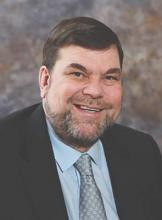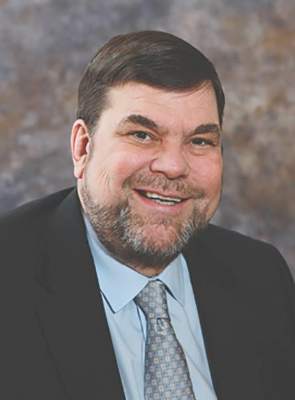User login
I just returned from the American Academy of Dermatology’s Washington “fly-in” and wanted to share some of my experiences. Every year, 180 or so dermatologists (all are invited!) and patient advocates spend 3 days in D.C., getting informed, trained, and organized to deliver our message to Congress. Each year, members and AAD staff winnow our many “wants” down to three reasonable “asks.” Background is given and our message rehearsed, for delivery in congressional and Senate offices. On the third day, appointments are kept with your representatives, and you get to try and convince them that your particular ask is beneficial to the country and, most importantly, patients.
This year, our “asks” were for better access to medications, specifically the ability to compound medications in the office (think diluting Kenalog for injection, come on!), which new Food and Drug Administration rules will interfere with; emphasizing the unfairness of narrow Medicare advantage networks; and our last, and usually annual, request for increased research funding for skin disease research.
The fly-in is a fascinating, and often fun, experience, which does affect how the U.S. government works. Truly, the squeaky (and most coherent and organized, thanks to AAD staff) wheel gets the grease.
This year, we had the additional weapon of a Government Accountability Office report released the day before our Hill visit, which independently confirmed our allegations regarding the unfairness of narrow networks to patients.
You may recall that last year, the Center for Medicare & Medicaid Services published detailed rules on increasing the accuracy of provider networks, which would have corrected many of the current problems we face. The only deficiency was that CMS has no procedures to review, audit, or enforce the rules they wrote. At the prodding of the AAD, the GAO took CMS to the mat and pummeled them, including such choice quotes as “99% of current provider networks have never been reviewed for accuracy” and “exemptions to insurers with inadequate provider access are approved routinely and never reviewed again.” The GAO made several sweeping recommendations for increased accountability, and the Department of Health & Human Services agreed with all of them.
Boring? Hardly. Think of this as taking the wooden stake created by your AAD, which was adopted by one government agency, and having it driven through the heart of insurance company deceit by another. It made for great emphasis on the Hill, and I expect big changes (and moaning and groaning from Medicare advantage plan insurance providers) in the coming months.
We also made great progress (you can tell by the interest by the staffers and members in our topics) on our other issues. I want to emphasize how effective our patient advocates were in explaining how expensive generics and cost of new drugs adversely affects them, how they have seen their doctors “delisted” from their insurance because their care is expensive, and why research into skin disease is so important to them. They “tie it all together” and bring it home.
I often talk about my “Washington Epiphany,” which can be summarized as, “politicians don’t worry about doctors, but they do about patients.” When you talk to politicians, bureaucrats, policy wonks, or the public about the woes of medical practice, always align it with the needs of patients, and you will be well received. In short, take care of your patients and they will take care of you.
Dr. Coldiron is a past president of the American Academy of Dermatology. He is currently in private practice, but maintains a clinical assistant professorship at the University of Cincinnati. He cares for patients, teaches medical students and residents, and has several active clinical research projects. Dr. Coldiron is the author of more than 80 scientific letters, papers, and several book chapters, and he speaks frequently on a variety of topics. Reach him at dermnews@frontlinemedcom.com.
I just returned from the American Academy of Dermatology’s Washington “fly-in” and wanted to share some of my experiences. Every year, 180 or so dermatologists (all are invited!) and patient advocates spend 3 days in D.C., getting informed, trained, and organized to deliver our message to Congress. Each year, members and AAD staff winnow our many “wants” down to three reasonable “asks.” Background is given and our message rehearsed, for delivery in congressional and Senate offices. On the third day, appointments are kept with your representatives, and you get to try and convince them that your particular ask is beneficial to the country and, most importantly, patients.
This year, our “asks” were for better access to medications, specifically the ability to compound medications in the office (think diluting Kenalog for injection, come on!), which new Food and Drug Administration rules will interfere with; emphasizing the unfairness of narrow Medicare advantage networks; and our last, and usually annual, request for increased research funding for skin disease research.
The fly-in is a fascinating, and often fun, experience, which does affect how the U.S. government works. Truly, the squeaky (and most coherent and organized, thanks to AAD staff) wheel gets the grease.
This year, we had the additional weapon of a Government Accountability Office report released the day before our Hill visit, which independently confirmed our allegations regarding the unfairness of narrow networks to patients.
You may recall that last year, the Center for Medicare & Medicaid Services published detailed rules on increasing the accuracy of provider networks, which would have corrected many of the current problems we face. The only deficiency was that CMS has no procedures to review, audit, or enforce the rules they wrote. At the prodding of the AAD, the GAO took CMS to the mat and pummeled them, including such choice quotes as “99% of current provider networks have never been reviewed for accuracy” and “exemptions to insurers with inadequate provider access are approved routinely and never reviewed again.” The GAO made several sweeping recommendations for increased accountability, and the Department of Health & Human Services agreed with all of them.
Boring? Hardly. Think of this as taking the wooden stake created by your AAD, which was adopted by one government agency, and having it driven through the heart of insurance company deceit by another. It made for great emphasis on the Hill, and I expect big changes (and moaning and groaning from Medicare advantage plan insurance providers) in the coming months.
We also made great progress (you can tell by the interest by the staffers and members in our topics) on our other issues. I want to emphasize how effective our patient advocates were in explaining how expensive generics and cost of new drugs adversely affects them, how they have seen their doctors “delisted” from their insurance because their care is expensive, and why research into skin disease is so important to them. They “tie it all together” and bring it home.
I often talk about my “Washington Epiphany,” which can be summarized as, “politicians don’t worry about doctors, but they do about patients.” When you talk to politicians, bureaucrats, policy wonks, or the public about the woes of medical practice, always align it with the needs of patients, and you will be well received. In short, take care of your patients and they will take care of you.
Dr. Coldiron is a past president of the American Academy of Dermatology. He is currently in private practice, but maintains a clinical assistant professorship at the University of Cincinnati. He cares for patients, teaches medical students and residents, and has several active clinical research projects. Dr. Coldiron is the author of more than 80 scientific letters, papers, and several book chapters, and he speaks frequently on a variety of topics. Reach him at dermnews@frontlinemedcom.com.
I just returned from the American Academy of Dermatology’s Washington “fly-in” and wanted to share some of my experiences. Every year, 180 or so dermatologists (all are invited!) and patient advocates spend 3 days in D.C., getting informed, trained, and organized to deliver our message to Congress. Each year, members and AAD staff winnow our many “wants” down to three reasonable “asks.” Background is given and our message rehearsed, for delivery in congressional and Senate offices. On the third day, appointments are kept with your representatives, and you get to try and convince them that your particular ask is beneficial to the country and, most importantly, patients.
This year, our “asks” were for better access to medications, specifically the ability to compound medications in the office (think diluting Kenalog for injection, come on!), which new Food and Drug Administration rules will interfere with; emphasizing the unfairness of narrow Medicare advantage networks; and our last, and usually annual, request for increased research funding for skin disease research.
The fly-in is a fascinating, and often fun, experience, which does affect how the U.S. government works. Truly, the squeaky (and most coherent and organized, thanks to AAD staff) wheel gets the grease.
This year, we had the additional weapon of a Government Accountability Office report released the day before our Hill visit, which independently confirmed our allegations regarding the unfairness of narrow networks to patients.
You may recall that last year, the Center for Medicare & Medicaid Services published detailed rules on increasing the accuracy of provider networks, which would have corrected many of the current problems we face. The only deficiency was that CMS has no procedures to review, audit, or enforce the rules they wrote. At the prodding of the AAD, the GAO took CMS to the mat and pummeled them, including such choice quotes as “99% of current provider networks have never been reviewed for accuracy” and “exemptions to insurers with inadequate provider access are approved routinely and never reviewed again.” The GAO made several sweeping recommendations for increased accountability, and the Department of Health & Human Services agreed with all of them.
Boring? Hardly. Think of this as taking the wooden stake created by your AAD, which was adopted by one government agency, and having it driven through the heart of insurance company deceit by another. It made for great emphasis on the Hill, and I expect big changes (and moaning and groaning from Medicare advantage plan insurance providers) in the coming months.
We also made great progress (you can tell by the interest by the staffers and members in our topics) on our other issues. I want to emphasize how effective our patient advocates were in explaining how expensive generics and cost of new drugs adversely affects them, how they have seen their doctors “delisted” from their insurance because their care is expensive, and why research into skin disease is so important to them. They “tie it all together” and bring it home.
I often talk about my “Washington Epiphany,” which can be summarized as, “politicians don’t worry about doctors, but they do about patients.” When you talk to politicians, bureaucrats, policy wonks, or the public about the woes of medical practice, always align it with the needs of patients, and you will be well received. In short, take care of your patients and they will take care of you.
Dr. Coldiron is a past president of the American Academy of Dermatology. He is currently in private practice, but maintains a clinical assistant professorship at the University of Cincinnati. He cares for patients, teaches medical students and residents, and has several active clinical research projects. Dr. Coldiron is the author of more than 80 scientific letters, papers, and several book chapters, and he speaks frequently on a variety of topics. Reach him at dermnews@frontlinemedcom.com.

